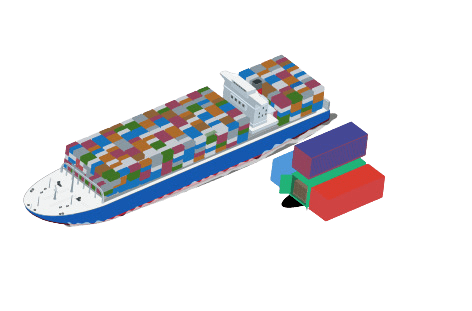In the complex world of international trade and logistics, where every minute counts, the concept of “time is money” takes on unique importance. This is where “transit time” comes into play, a crucial piece of the puzzle in logistics operations.
In this article, we will delve deep into the concept of transit time, understand its significance, and discuss strategies to reduce it, ensuring a competitive advantage in the global market.
Unraveling Transit Time
The term “transit time” refers to the amount of time it takes for a commodity to travel from approval for shipment to its arrival at the final destination. Whether in hours, days, weeks, or months, this time is a critical variable throughout the supply chain.
The impact of transit time is immense, influencing companies’ decisions regarding purchases, sales, and negotiations. Urgency and necessity can shape this time variable, either demanding a shorter and more expensive transit time or a longer but acceptable transit time.
Different modes of transportation—air, sea, road, and rail—introduce variations in transit time. Each mode has its own peculiarities that can increase or decrease transit time.
Transit Time vs. Lead Time
Another common term is “lead time.” Lead time encompasses the entire interval required from demand to delivery of the goods at the destination. It is a key component for supply chain planning and, when combined with transit time, forms the total process time.
Strategies to Reduce Transit Time
Reducing transit time is a top priority for companies seeking agility, efficiency, and customer satisfaction. Here are some strategies to achieve this reduction:
- Team Empowerment: Investing in team empowerment is crucial. Teams well-informed about the market and emerging technologies can adopt more agile and efficient processes, increasing the company’s competitiveness and reducing transit time.
- Data Accuracy: Accurate data is the foundation of any efficient logistics operation. Strategies based on reliable information directly contribute to time reduction. Constant access to and review of data are crucial for precise management.
- Software Monitoring: Implementing monitoring software can be a significant ally. Through technology use, the company can track goods in real time, identify potential bottlenecks, and take proactive actions to ensure agility in operations.
Conclusion
Transit time is more than just a metric; it is a driving force behind international trade and logistics operations. Reducing transit time is not just about saving time but also about gaining efficiency, competitiveness, and customer satisfaction.
By implementing strategies such as team empowerment, data accuracy, and the use of monitoring technologies, companies can ensure a competitive advantage in the global market, where time is truly a valuable asset.
What is Cheap2Ship?
Meet Cheap2Ship, a technology company specialized in logistics and international trade. Through our advanced platform for freight management and quoting, medium and large companies have experienced significant increases in operational efficiency and reductions in logistics costs.
Our commitment is to provide greater transparency in the costs associated with current freight providers, such as shipowners, freight forwarders, and carriers. With this, our clients can make more informed and strategic decisions for their businesses.
To learn more about our innovative solutions, visit our website and follow us on social media. There, you will find relevant content about international trade, logistics, and supply chain. We are ready to drive your company’s success in the global market. Join us and discover how we can make a difference for your business.

